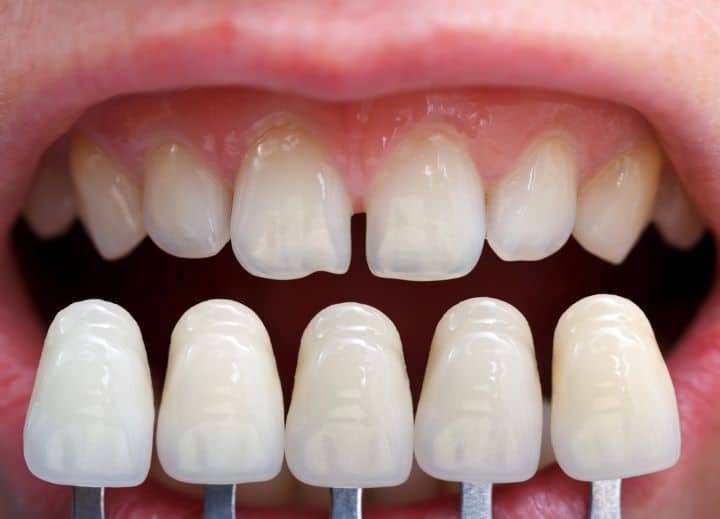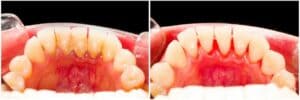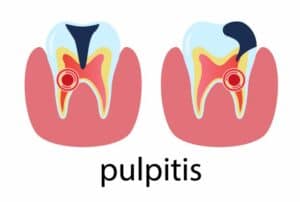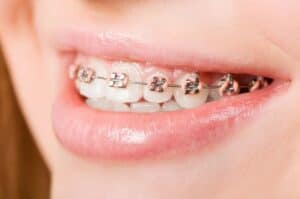While it is true that fillings last a long time, unfortunately, they do not last forever.
And sometimes a filling may fall off without you even realizing it!
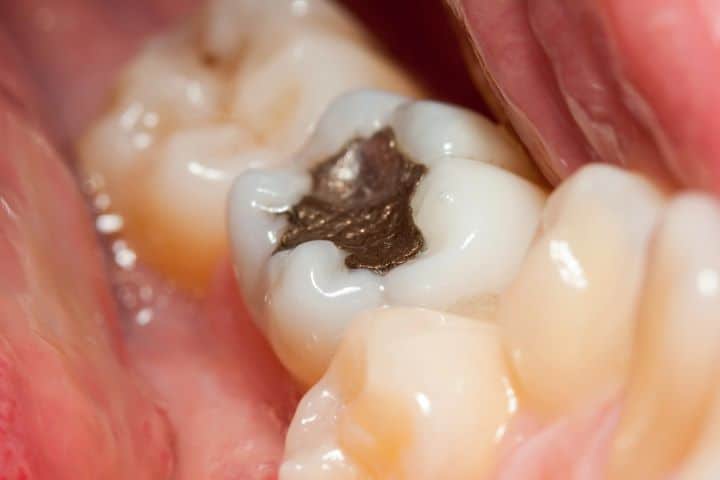
It isn’t all too unusual to have your filling slip out; in fact, most dental practices report lost fillings to be one of the most common reasons that bring patients to their emergency dental offices.
Here’s a guide on what you should do in case your filling falls out.
Understanding Dental Fillings
You might receive a filling or restoration if you have a cavity or hole in your tooth. Dental fillings are special materials that are used to repair the abnormal holes or gaps in your tooth enamel typically caused by tooth decay.
Tooth decay or caries occurs when harmful bacteria attack the healthy surfaces of the teeth, causing them to “dissolve” under the acid’s strength.
Globally, cavities are the most common chronic disease. The Centers for Disease Control and Prevention (CDC) informs that over 52 percent of children in the U.S. aged between 6 and 8 years have a cavity in their baby teeth.
Furthermore, an astounding 90 percent of all adults aged 20 and older have had at least one cavity in their permanent teeth!
The most alarming part of this information is that caries are completely preventable.
This is where tooth fillings come into play. The dentist removes the decay and fills the space with metals, plastics, glass, or other materials.
Fillings are also used to repair cracked or fractured teeth and teeth that have been worn down due to accidents, old age, tooth grinding, or even nail-biting.
Types of fillings
A variety of filling materials are available today. Generally, you can get your tooth filled with any of these fillings:
- Amalgam filling: Also known as silver filling, it is a combination of minerals such as tin, zinc, copper, and mercury. It is affordable and sturdy – easily lasting 12 years.
- Gold filling: Yes, you heard that right. You can get your tooth filled with gold – gold alloys to be specific. Nevertheless, this type of filling is an aesthetician’s dream! It is also strong and can last at least 10 to 15 years.
- Porcelain filling: These tooth-colored filling materials are not only durable but also cosmetically superior to other filling materials.
- Composite filling: Made up of plastic and resin, it is a special material hardened only using a bright curing light. They can survive up to 5 to 10 years.
- Glass ionomer filling: This type of filling is made from a mix of glass and acrylic and is best at combating decay in childhood.
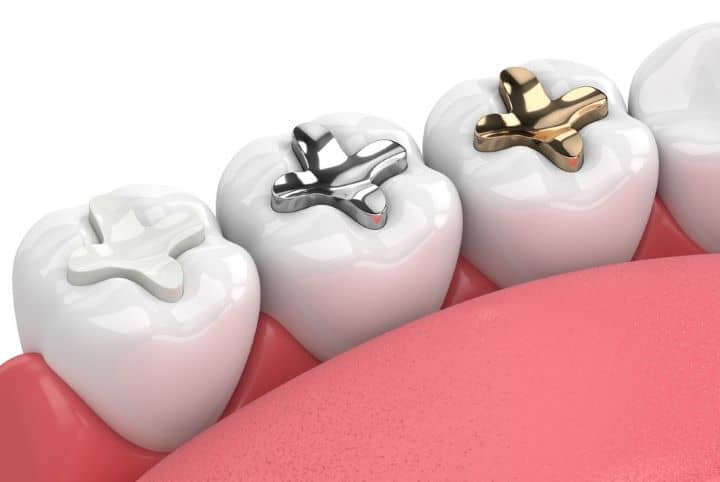
How did my filling fall out?
Once your tooth restorations are placed, they are put under a lot of pressure.
Over the years, it is inevitable for them to loosen up and fall out on their own. Sometimes a filling can fall out as you chew on a particularly rubbery piece of meat or from vigorous brushing.
Regardless of how it happens, it might be in your best judgment to get it assessed by your dental service provider.
What can cause a filling to fall out?
Your filling could pop out due to many varied reasons but it may especially be a problem if you have an underlying dental issue that requires immediate attention. You could have lost a tooth restoration due to:
- Dental trauma, accidents, or injuries to the head and face.
- Consumption of hard, sticky, or crunchy foods.
- Vigorously chewing on a filling.
- Excessive plaque buildup surrounding the corners of your filling.
- Natural wear-and-tear of your tooth.
- Involuntarily grinding your teeth in a condition called bruxism.
- Aggressive brushing, flossing, or cleaning of the teeth.
- Injury to the tooth that could cause a filling to loosen or fall out.
- Old fillings beyond their expiration and worn-out margins.
- A chemical reaction that loosens the bond of the filling to your tooth.
More times than not, you might notice signs of your tooth restoration loosening, aggravated during brushing or eating.
Is it an emergency if a filling comes out?
While it may not be classified as an emergency, losing a filling will still require urgent medical attention. This is because a missing filling exposes the underlying layer of your tooth (dentin), leaving it vulnerable to infection.

Additionally, food debris and particles can get lodged into your tooth cavity, fostering an ideal acidic environment for bacteria to inhabit. This can lead to further tooth decay.
So, instead of grieving your lost filling, you need to get to a dentist as soon as possible. This includes instances even when your tooth doesn’t necessarily hurt.
What to do when a filling comes off?
You might be panicked and extremely agitated by the sudden withdrawal of your filling, but you must act fast.
Step 1: Assess the damage
First things first, try to locate the loose piece. If your filling has splintered into multiple pieces, make sure to gather all of the tiny pieces. Ensure that you do not accidentally swallow the broken piece.
Once you find the missing piece of the filling, you should assess your tooth and surrounding tissues for any injury. Is there any visible damage to your teeth? Is there dental trauma with bleeding? Are your teeth and gums in pain?
Check to see if the affected tooth has not fractured under the filling. In any case, you should visit your dentist to get your tooth professionally examined.
Step 2: Manage the pain
The missing filling will probably have exposed the more sensitive layer of your tooth, the dentin. Since this layer includes nerve endings, you might experience pain soon after this dislodgement.
Until you make it to the dentist, you can get over-the-counter pain relievers like ibuprofen or acetaminophen from your local drugstore to reduce pain and discomfort, if any. Check for the proper dosage.
You can also apply clove oil or oral-safe numbing cream or gel to your tooth or gums.
Excessive pain is a sign that you should call the dentist immediately.
Step 3: Keep your teeth as clean as possible
A broken filling means that your tooth is prone to food getting stuck in. Keep the area clean to protect the tooth from further damage.
Immediately rinse your mouth thoroughly with warm salt water. You can also use anti-bacterial mouthwash to cleanse your mouth of any remaining filling pieces.
You should also brush or floss the affected tooth as usual to maintain proper oral hygiene.
Home remedies for filling that fell out
Ideally, you should get to a medical professional as soon as your filling falls out. But it may not always be convenient. So, here are a few tips to take care of your tooth until you see a dentist:
- Avoid consuming foods that are too hot, cold, spicy, or sweet for the time being.
- Only eat soft foods to avoid unnecessary pressure on your exposed tooth.
- Don’t throw away the dislodged or loose filling as your dentist may be able to reattach it.
- (Optional) Use a dental wax or sugar-free chewing gum to plug the cavity.
- Refrain from chewing on the affected side.
- (Optional) Place a temporary filling material yourself. They are available at your local pharmacy.
Seeking proper dental care: Time to get to a dentist?
It is always best to see your dentist as soon as possible after a filling incident even if your pain has subsided.
/uncared for/ damaged filling can lead to
Can you get a replacement filling?
The good news is that most dental offices are equipped to handle your filling emergencies. Initially, the doctor may review your medical history.
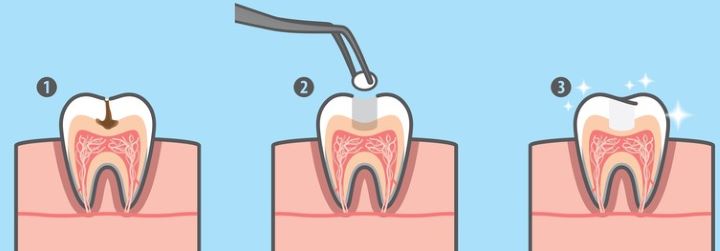
You may also need an X-ray if your dentist suspects additional damage to your tooth or tissues.
If the tooth is restorable, the loose filling may need to be replaced with a new filling.
Your filling options will heavily depend on the location and severity of your tooth loss. A silver filling may be your best bet if the tooth in question is your back tooth.
For a front tooth that requires cosmetic consideration, a composite, porcelain, or even gold restoration may be a better option.
How long will your new filling last?
The longevity of your filling will depend on the strength of the material, the force applied to the tooth, and how well you take care of the tooth.
Amalgam restorations last much longer than other fillings. Similarly, front teeth fillings last longer than back ones.
Do you need any additional dental procedures?
Sometimes, the cavity left behind after your filling falls out is deep and may also involve
the exposure of the nerves. In such cases, you will have to go for a root canal. This will then be followed with dental crown placement using special dental cement.
If the case is severe, the dentist may recommend to remove the tooth entirely. You may replace this missing tooth with a dental implant. You should call your dentist to schedule an appointment for any of these additional dental treatments.
Cost of repair
Dental fillings cost as such:
- Composite fillings — $90-$300 (per tooth)
- Glass Ionomer fillings — $90-$300 (per tooth)
- Silver amalgam fillings — $50-$200 (per tooth)
- Gold fillings — $500-$4,500 (per tooth)
Dental insurance covers most of the filling costs.
How do I prevent fillings from falling out in the future?
Now that you have received a new filling, you need to take proper care of your mouth.
Steps to take to avoid a loose filling
- Meet up with your dentist regularly to keep up with the health of your teeth. Regular dental checkups every 6 months are ideal.
- Brush and floss your teeth to keep your teeth and gums clean and prevent tooth decay.
- Avoid biting down hard on foods with your restored tooth.

